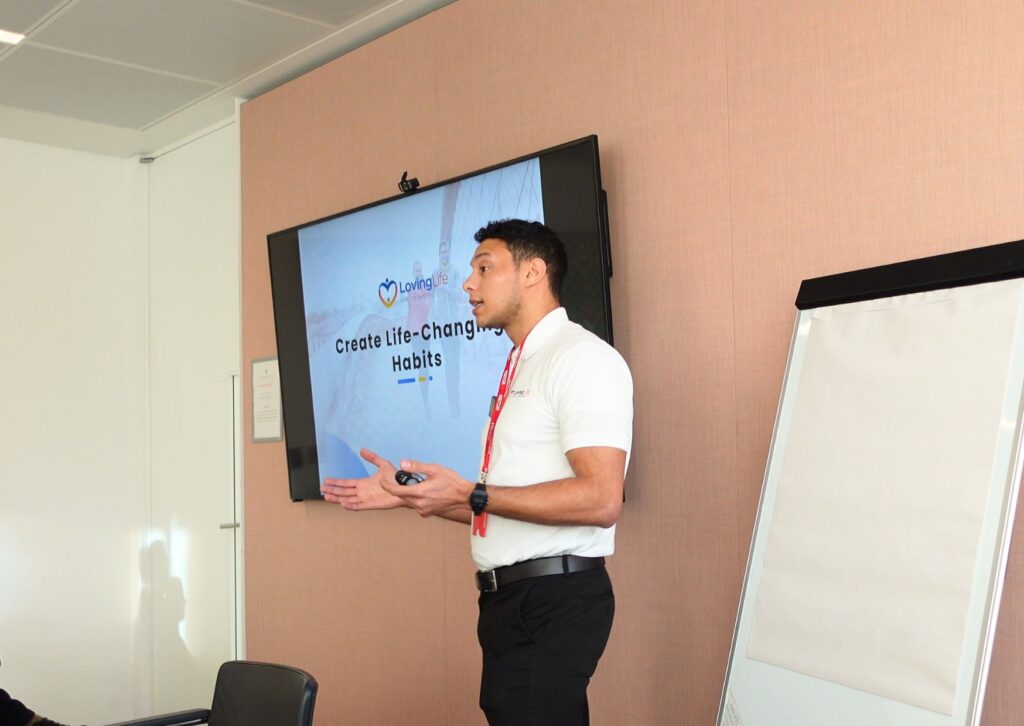Why Employee Gratitude Matters and How to Encourage It
In the ever-evolving landscape of workplace wellbeing, employee gratitude is a hidden method to improve wellbeing.
More than just a passing trend, this concept holds the promise of reshaping workplaces into thriving communities of collaboration and appreciation.
Employee gratitude is not just about saying “thank you”, it’s about creating a culture where every contribution is valued.
In this blog, we’ll look at why embracing employee gratitude is important in and professional environment.
Contents
The Importance of Employee Gratitude
5 Ways to Foster Employee Gratitude
Challenges in Fostering Employee Gratitude
What is Employee Gratitude?
Employee gratitude is the heartfelt appreciation felt and expressed by and towards employees, acknowledging the value of their contributions and efforts.
It’s not just about recognising the big wins or monumental achievements.
It’s about seeing and appreciating the everyday efforts, the extra miles, and the small gestures that often go unnoticed.
Think of it as the glue that binds a team together, fostering an environment where everyone feels seen, heard, and genuinely valued.
It goes beyond the routine ‘thank you’ or a pat on the back.
It’s a culture, a mindset, and a commitment to recognising that every role, every task, and every individual plays a crucial part in the bigger picture.

The Importance of Employee Gratitude
In a world where job roles often overlap and everyone is hustling, the significance of employee gratitude cannot be understated. Let’s delve into why it’s such a game-changer:
Boosts Morale
Recognising efforts boosts an individual’s morale. When employees feel appreciated, they’re more likely to put their best foot forward every single day. It’s a simple human need—to feel valued—and gratitude fulfills it beautifully.
Enhances Job Satisfaction
An environment that regularly practices gratitude often witnesses higher job satisfaction.
Employees don’t just work for money, they thrive on appreciation and the knowledge that they’re making a difference.
Builds Trust and Team Cohesion
Genuine appreciation fosters trust. When team members feel acknowledged, they are more likely to trust their peers and superiors, leading to a more cohesive, united team.
Drives Productivity
Believe it or not, a ‘thank you’ can drive results. Employees who feel appreciated are often more motivated and productive, knowing their efforts don’t go unnoticed.
Reduces Turnover
High employee turnover can be a significant drain on resources and morale. However, when gratitude is a part of the workplace culture, employees are more likely to stay, reducing the costs and disruptions of frequent hiring.

In essence, employee gratitude is the oil that keeps the machinery of a company running smoothly. It’s not just a ‘nice-to-have’; it’s an essential ingredient for a thriving, successful workplace.
5 Ways to Foster Employee Gratitude
Cultivating a culture of gratitude is beautiful within a working environment.
The journey might seem challenging initially, but with thoughtful interventions, it can become second nature for your organisation.
Here are five impactful ways to nurture this invaluable trait:
1. Harnessing Gratitude Workshop
One of the most direct approaches to instil gratitude is through structured learning sessions.
The Harnessing Gratitude Wellbeing Workshop is an excellent example.
This session is meticulously designed to help participants understand the science and art of gratitude, its impact on mental wellbeing, and practical ways to incorporate it into daily life.
Workshops like these not only offer tools and techniques, but also provide a shared experience that can serve as a foundation for a more gratitude-centric work environment.

2. Regular Feedback and Appreciation Sessions
The corporate world can be a whirlwind of tasks, deadlines, and meetings.
Amid this rush, the consistent efforts of team members can sometimes fade into the background.
Instituting regular feedback and appreciation sessions can change this dynamic.
These aren’t just about reviewing performance.
They offer a dedicated space where each individual’s contributions are recognised and celebrated.
Such sessions can become a monthly ritual.
Teams can come together, not just to discuss targets, but to genuinely appreciate the journey, the challenges they’ve overcome, the extra hours put in, and the innovative ideas brought to the table.
Over time, these moments of recognition can boost confidence, build trust, and foster a culture where everyone feels seen and valued.

3. Gratitude Journals
The act of reflecting upon and recording moments of gratitude can be transformative.
By encouraging employees to maintain gratitude journals, you’re inviting them to pause and ponder about the positive aspects of their work life.
This isn’t just about the big milestones.
It could be about a colleague who offered help, a successful team meeting, or even a peaceful lunch break.
As employees jot down these moments, they begin to cultivate a habit of seeking positivity, even on challenging days.
Over weeks and months, this simple practice can lead to a shift in mindset, where individuals not only feel gratitude but also express it more openly, uplifting the entire work environment.

4. Peer Recognition Programs
While appreciation from leadership is valuable, recognition from peers holds a unique charm.
Implementing a peer recognition program can be amazing for employees.
It’s not just about formal awards, it’s about creating avenues where team members can shout out and appreciate each other’s efforts.
This could be a dedicated section in team meetings, a bulletin board in the office, or a digital platform where employees can highlight the kind gestures, innovative solutions, or the sheer hard work of their peers.
Over time, this promotes a sense of team work, where employees not only feel valued but also take active steps to make their colleagues feel the same.

5. Cultivate a Mentorship and Growth Environment
One of the most profound ways to foster gratitude among employees is by investing in their personal and professional growth.
When individuals have access to mentorship programs, skill development workshops, or platforms where they can share and learn, they recognise that the organisation is not just a place to work but a space to grow.
This sense of growth and progression often translates into gratitude.
Employees feel thankful for the opportunities to develop, the guidance they receive, and the chance to evolve in their roles.
This gratitude is not just directed towards the organisation, but also towards mentors, team leaders, and peers who play a part in their growth journey.

Challenges in Fostering Employee Gratitude
Fostering a culture of employee gratitude, while immensely beneficial, does come with its unique set of challenges.
Understanding these hurdles is the first step toward addressing them effectively.
Here are some of the common challenges organisations face:
Misunderstanding Gratitude as a One-Size-Fits-All
Just as every individual is unique, so is their expression and reception of gratitude.
What feels like a genuine gesture of appreciation to one person might not resonate with another.
Organisations often struggle with finding universally effective ways to foster gratitude, forgetting that personalised approaches can sometimes have a more profound impact.
Overlooking Everyday Achievements
In the quest for big wins and significant milestones, the everyday efforts of employees can often be overlooked.
The consistent performer, the ever-reliable team member, or the silent contributor might not always have their efforts recognised, leading to feelings of being taken for granted.

The Trap of Tokenism
Sometimes, in an effort to institutionalise gratitude, organisations might resort to token gestures.
These consist of routine thank you emails, impersonal appreciation certificates, or generic rewards.
While these might tick the box of ‘expressing gratitude,’ they can sometimes come off as insincere, doing more harm than good.
Lack of Training for Leadership
Leaders and managers play a pivotal role in setting the tone for gratitude within teams.
However, if they aren’t trained or equipped to express appreciation effectively, it can lead to missed opportunities to foster a culture of gratitude.
Neglecting the Power of Peer Gratitude
While gratitude from superiors is essential, peer gratitude holds its own charm.
Organisations often miss out on creating platforms or avenues where employees can appreciate and thank each other, losing out on the powerful ripple effect such gestures can create.
Addressing these challenges requires intention, effort, and a genuine desire to create an environment where every individual feels seen, valued, and, most importantly, grateful.

The journey to fostering a culture rich in employee gratitude is both rewarding and challenging.
As with any meaningful transformation, it requires effort, understanding, and consistency.
By prioritising and nurturing gratitude, we’re not just building better workplaces, but also shaping brighter futures.
Author
Tyler Lowe – Health & Wellbeing Speaker
BSc Sport & Exercise Rehabilitation


